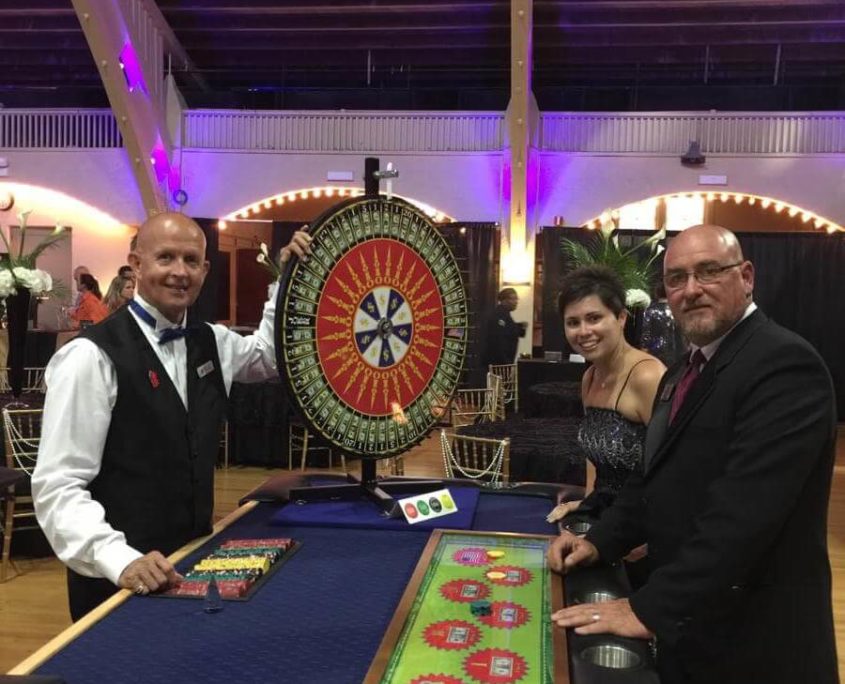Remember: in blackjack, your chances of winning or busting will change each time a card is removed from the deck. In Example 1, the probability of the dealer going bust on their next card is 19.98%. Blackjack author Don Schlesinger takes this rule one step further with his Ultimate Blackjack Strategy card, where he states: 'Stand if 16 is multi-card, or the result of a pair split.' According to Schlesinger, 'When all multi-card 16s are taken into account, and the edges are weighted, it is wiser to stand on all of them rather than hit. Blackjack is a comparing card game between a player and dealer and played with one or more French decks of 52 cards. The player is dealt an initial two card hand with the option of drawing cards to bring the total value to 21 or less without exceeding it, so that the dealer will lose by having a lesser hand than the player or by exceeding 21.
We first present the probabilities attached to card dealing and initial predictions. In making this calculus, circumstantial information such as fraudulent dealing is not taken into account (as in all situations corresponding to card games). All probabilities are calculated for cases using one or two decks of cards. Let us look at the probabilities for a favorable initial hand (the first two cards dealt) to be achieved. The total number of possible combinations for each of the two cards is C(52, 2) = 1326, for the 1-deck game and C(104, 2)=5356for the 2-deck game.
Probability of obtaining a natural blackjack isP= 8/663 = 1.20663% in the case of a 1-deck game andP = 16/1339 = 1.19492%in the case of a 2-deck game.
Probability of obtaining a blackjack from the first two cards isP= 32/663 = 4.82654%in the case of a 1-deck game andP = 64/1339= 4.77968%in the case of a 2-deck game.
Similarly, we can calculate the following probabilities:
Probability of obtaining 20 points from the first two cards isP = 68/663 = 10.25641% in the case of a 1-deck game andP= 140/1339 = 10.45556%in the case of a 2-deck game.
Probability of obtaining 19 points from the first two cards isP = 40/663 = 6.03318%in the case of a 1-deck game andP = 80/1339 = 5.97460%in the case of a 2-deck game.
Probability of obtaining 18 points from the first two cards isP= 43/663 = 6.48567%in the case of a 1-deck game andP= 87/1339 = 6.4973% in the case of a 2-deck game.
Probability of getting 17 points from the first two cards isP= 16/221 = 7.23981%in the case of a 1-deck game andP= 96/1339 = 7.16952%in the case of a 2-deck game.
A good initial hand (which you can stay with) could be a blackjack or a hand of 20, 19 or 18 points. The probability of obtaining such a hand is calculated by totaling the corresponding probabilities calculated above: P = 32/663 + 68/663 + 40/663 + 43/663 = 183/663, in the case of a 1-deck game and P = 64/1339 + 140/1339 + 80/1339 + 87/1339 = 371/1339, in the case of a 2-deck game.
Probability of obtaining a good initial hand isP= 183/663 = 27.60180%in the case of a 1-deck game andP= 371/1339 = 27.70724%in the case of a 2-deck game.
The probabilities of events predicted during the game are calculated on the basis of the played cards (the cards showing) from a certain moment. This requires counting certain favorable cards showing for the dealer and for the other players, as well as in your own hand. Any blackjack strategy is based on counting the cards played. Unlike a baccarat game, where a maximum of three cards are played for each player, at blackjack many cards could be played at a certain moment, especially when many players are at the table. Thus, both following and memorizing certain cards require some ability and prior training on the player's part. Card counting techniques cannot however be applied in online blackjack.
Blackjack Odds Card Counting
The formula of probability for obtaining a certain favorable value is similar to that for baccarat and depends on the number of decks of cards used. If we denote by x a favorable value, by nx the number of cards showing with the value x (from your hand, the hands of the other players and the face up card in the dealer's hand) and by nv the total number of cards showing, then the probability of the next card from the deck (the one you receive if you ask for an additional card) having the value x is:
This formula holds for the case of a 1-deck game. In the case of a 2-deck game, the probability is:
Generally speaking, if playing with m decks, the probability of obtaining a card with the value x is:
Example of application of the formula: Assume play with one deck, you are the only player at table, you hold Q, 2, 4, A (total value 17) and the face up card of the dealer is a 4. Let us calculate the probability of achieving 21 points (receiving a 4).
We havenx = 2, nv = 5, so:
.
For the probability of achieving 20 points (receiving a 3), we havenx = 0, nv = 5, so:
.
For the probability of achieving 19 points (receiving a 2), we havenx = 1, nv = 5, so:
.
If we want to calculate the probability of achieving 19, 20 or 21 points, all we must do is total the three probabilities just calculated. We obtainP = 9/47 = 19.14893%.
Unlike in baccarat, where fewer cards are played, the number of players is constant (two), and the number of gaming situations is very limited, in blackjack, the number of possible playing configurations is in the thousands and, as a practical matter, cannot be entirely covered by tables of values. Black widow slot game.
Sources |
A big part of the gaming situations that require a decision, where the total value held is 15, 16, 17, 18, 19 or 20 points, is comprised in tables in the section titled Blackjack of the book PROBABILITY GUIDE TO GAMBLING: The Mathematics of Dice, Slots, Roulette, Baccarat, Blackjack, Poker, Lottery and Sport Bets.You will also find there other issues of probability-based blackjack strategy . See the Books section for details. |
Odds At Blackjack
Blackjack is a game of skill. The more you understand the odds of the game, the more likely you are to win.
There is a reason that a player is supposed to hit 12 against a 2 or 3. That is because the odds are with the player based on all of the possible outcomes. There are also reasons why the rules change from one game to another based on the number of decks, variation or simply the generosity of the house.

The most basic odds to know are how often a hand is dealt. We will go over those, as well as how each rule change affects you as a blackjack player.
Odds of Getting Dealt Certain Hands
This list below represents the odds of receiving a hand based on the first two cards dealt in single deck blackjack. Due to the small numbers, they are rounded to the nearest tenth of a percentage point. These include soft hands, meaning that it includes an ace.

The most basic odds to know are how often a hand is dealt. We will go over those, as well as how each rule change affects you as a blackjack player.
Odds of Getting Dealt Certain Hands
This list below represents the odds of receiving a hand based on the first two cards dealt in single deck blackjack. Due to the small numbers, they are rounded to the nearest tenth of a percentage point. These include soft hands, meaning that it includes an ace.
- Blackjack: 4.8%
- 20: 10.5%
- 19: 6%
- 18: 6.5%
- 17: 7.2%
Odds of Busting a Blackjack Hand
Below is a list of hands that may bust. These do not include soft hands, which include an ace that may still be used as one point. These percentages apply to both dealer and player hands. These are rounded to the closest whole percentage point.
Blackjack Odds Cards
This also assumes the next card is a bust. If a small card is received, refer to the new hand value for the proper blackjack odds.
- 12: 31%
- 13: 39%
- 14: 56%
- 15: 58%
- 16: 62%
- 17: 69%
- 18: 77%
- 19: 85%
- 20: 92%
- 21: 100%
The numbers above prove why players should stand on 17 and higher. The exception is when the 17 is soft. An 18 that is soft should also be hit against a 9, 10 or ace. It should also be doubled against a 2-6, when permitted.
Odds of Dealer Busting Based on Door Card
These are the odds of the dealer busting, based on his exposed card. The odds include a bust on any
number of cards and are rounded to the nearest whole percent.
- 2: 35%
- 3: 37%
- 4: 40%
- 5: 42%
- 6: 42%
- 7: 26%
- 8: 24%
- 9: 23%
- 10: 23%
- Ace: 17%
This shows why it is important to hit to at least a hard 17 against a dealer's 7 or higher. The chances of the dealer making a hand is far too high to stay on a 16 hoping the dealer busts these made door cards.
How Rules Affect Odds
There are a variety of rules that can change the blackjack odds. The odds tend to be better at online
casinos than the Las Vegas Strip or Atlantic City. These show how the house edge is worse based on the rule change.
- Blackjack pays 6-5: -1.39%
- Dealer hits soft 17: -.22%
- Double on 10 or 11 only: -.18%
- European blackjack hole card rule: -.11%
- Double on 9-11 only: -.09%
- No re-split aces: -.08%
- No surrender: -.07%
Check out our basic blackjack strategy chart to help you make decisions on what you should do while playing taking into consideration your cards against the blackjack dealer.
Looking for where to play internet blackjack? Look no further FreeCasinoGames.net one of the best blackjack guides with information on where to play on the internet and a variety of free blackjack games.

